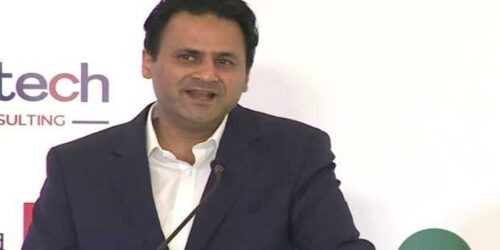ISLAMABAD: The government will neither privatize its all electric power distribution companies (DISCOs) nor sell out their shares as well, rather it will hand over management of every company and outsource the high losses feeders to the private sector.
This will ensure to make DISCOs efficient by scaling down losses and increasing the recovery of the billed electricity to consumers to make the power sector sustainable.”
Special Assistant to the Prime Minister on Power and Petroleum Mr Tabish Gauhar disclosed this to The News in an interview here on Thursdays. SAPM also touched upon the issues like the circular debt management plan shared with IMF that alarmingly ballooned in last two and half years, and capacity payments trap causing increase in tariff and undertaking given to IMF to make power sector sustainable coupled with the issue of more surges in tariff in years to come to cope with losses. He too updated the situation emerged out of NAB fears that gripped top bureaucracy resulting in zero progress on implementation of revised contracts signed with 47 IPPs to ensure discounted tariff of Rs836 billion in next 20 years.
When asked about tariff increase by the incumbent government, the Special Assistant to the Prime Minister responded saying that in the last two and half years, the power tariff has surged by 40 percent. He said that in case the government remains unmoved and does nothing in reducing losses and improving recovery and introducing the ample efficiencies in NTDC, NPPC, NTDC, and transmission and distribution system, then the circular debt will jack up to whopping Rs4500 billion by 2023.
And under the doomsday scenario if appears in case of doing nothing on required actions, the government will be left with no option but to increase power tariff only by Rs4.50 per unit with impact of finance burden of Rs800-900 billion and double the subsidy up to Rs300 billion. However increasing the 100 percent subsidy will be hard for the government as IMF may not allow.
He said that the country is trapped in massive capacity payments because of setting up of unplanned power plants by the previous regime. The maximum installed capacity stands at over 36000 MW, but the peak demand in summer seasons goes up to 25000 MW and in winter season it hovers at 10,000-12,000MW and the remaining capacity remains idle and the consumers’ have to pay the capacity charges in tariff.
This year the government has to pay Rs900 billion to IPPs in the head of capacity charges. Of Rs 900 billion, the government will have to pay 30 percent of capacity charges to IPPs installed under CPEC umbrella. The capacity payments will hike to Rs 1455 billion by 2023 out of which 50 percent will be of IPPs set up under CPEC.
Coming to the electric power distribution companies, Mr Tabish says that DISCOs inefficiencies including line losses are contributing reasonable share in circular debt on average, out of which the massive share in circular debt coming from the loss making companies such as HESCO, SEPCO, MEPCO, PESCO and QUESCO.
“And this is really an alarming challenge for the government to cope with,’ he said while quoting an example of HESCO and SEPCO of which losses have reached 50 percent because of which the government is braving the annual hemorrhaging of Rs45 billion.





